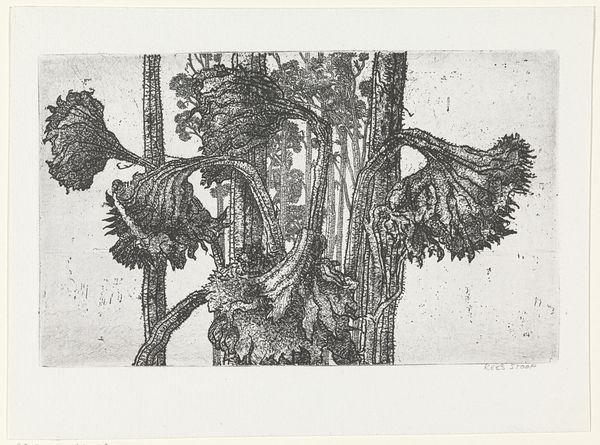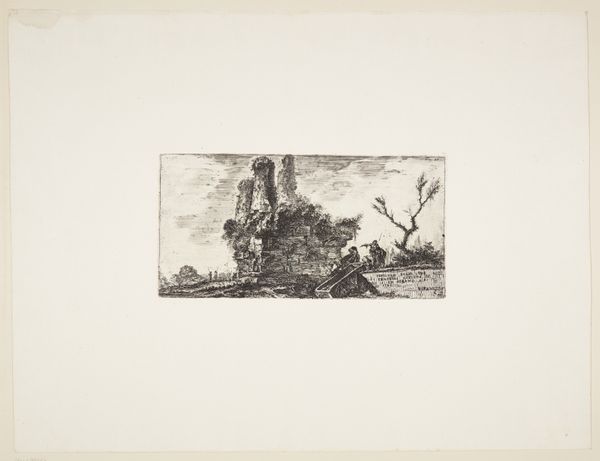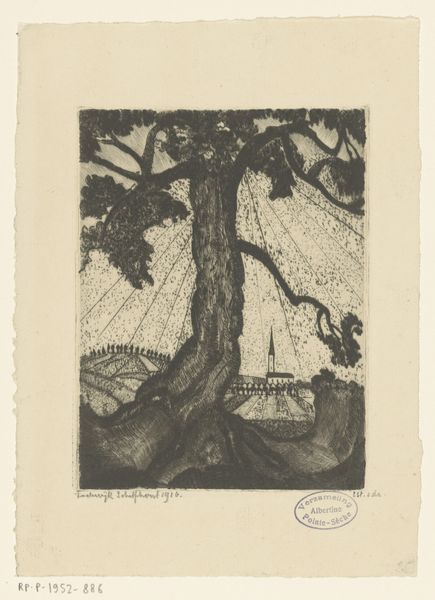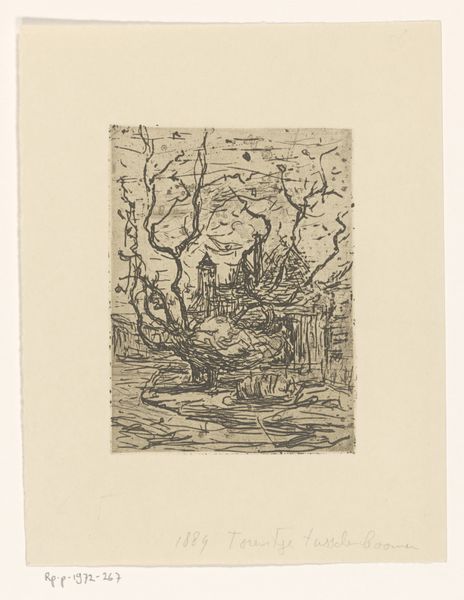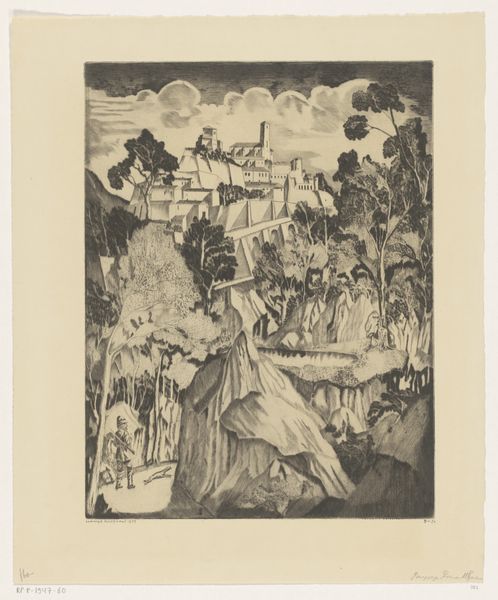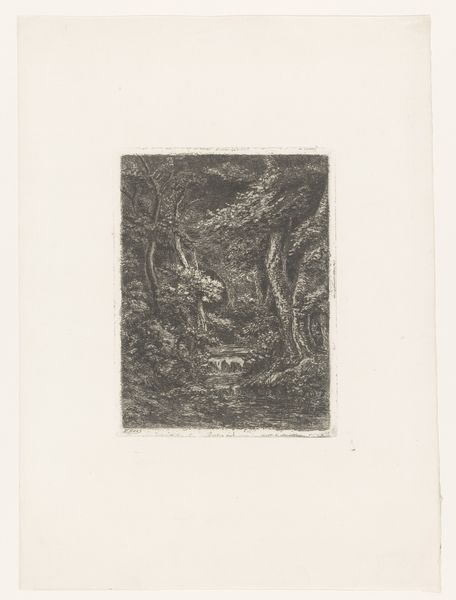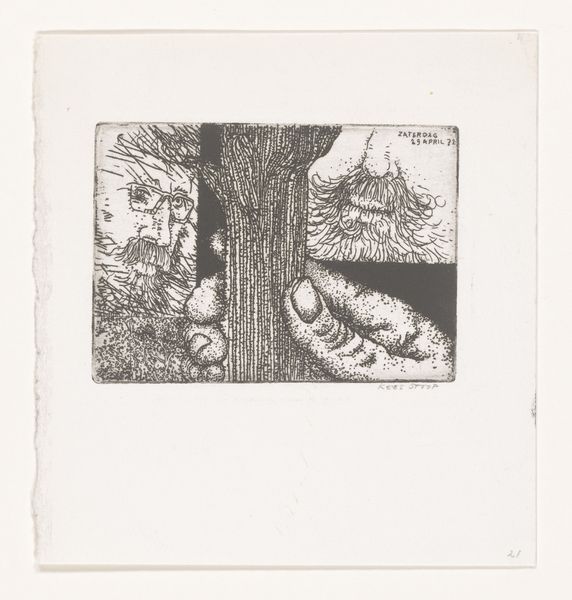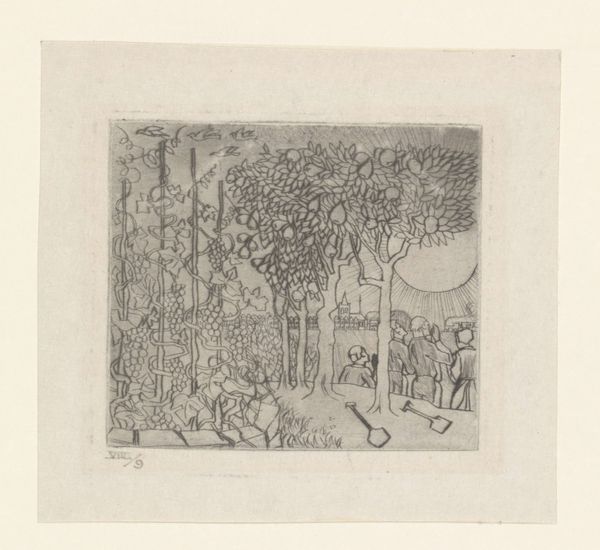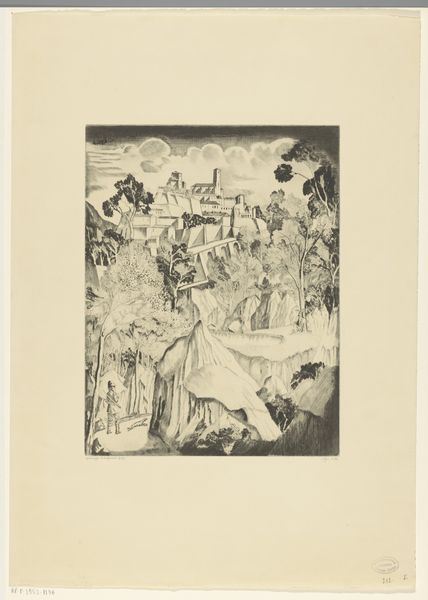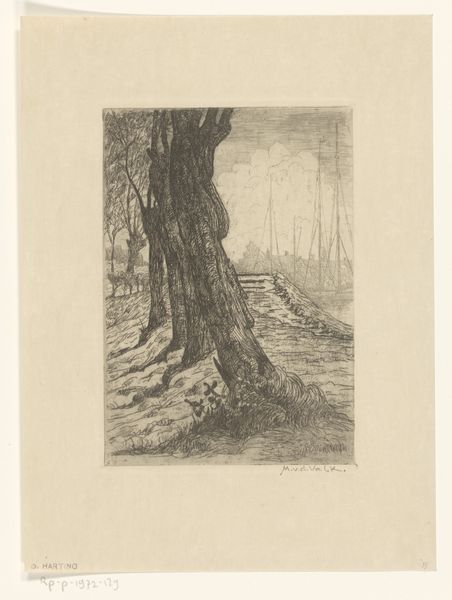
print, etching
# print
#
etching
#
landscape
#
linocut print
#
plant
#
pen-ink sketch
Dimensions: height 328 mm, width 349 mm
Copyright: Rijks Museum: Open Domain
Curator: Here we have Arend Hendriks' "Cabbage in a Landscape," an etching created sometime between 1911 and 1941. Editor: Immediately, I'm struck by the textures. The stark black lines against the white create such a rich density, almost like looking through a screen. Curator: It’s interesting you mention texture. The rough lines achieved through the etching process feel inherently tied to the earth, doesn’t it? Agriculture, and particularly the cultivation of something as simple as cabbage, speaks to a specific social strata, an essential element in our understanding of Dutch society at this time. It brings up questions of labor, subsistence, and even class. Editor: Absolutely. The cabbage stalks dominate the scene. It's all about repetition and contrast – the repetitive mark-making against the relatively blank sky, the close-up cabbage versus the blurred landscape. It almost borders on abstraction. Curator: Consider too the symbolic weight we might assign the humble cabbage, transformed here into something almost monumental. How does that reframing shift our perspective, challenging preconceived notions of value and importance, echoing the early modernists, maybe, who tried to level hierarchy? Editor: Well, beyond the social implications, it also really draws attention to form and structure. Note the interplay of the verticality of the stalks, the roundness of the cabbage heads themselves. They give the eye distinct places to land, making for a rather satisfying composition. Curator: Precisely. We’re considering not just the aesthetic impact but also the underlying discourse of identity. This etching, made during such tumultuous times in Europe, provides, maybe, a small meditation on the relationship between the individual, society, and the land that sustains them. Editor: A really rewarding study in contrasts, both visual and conceptual, indeed. Curator: Yes, and that is maybe how art endures, not simply as an echo of an era, but also a mirror reflecting our own complex realities.
Comments
No comments
Be the first to comment and join the conversation on the ultimate creative platform.

